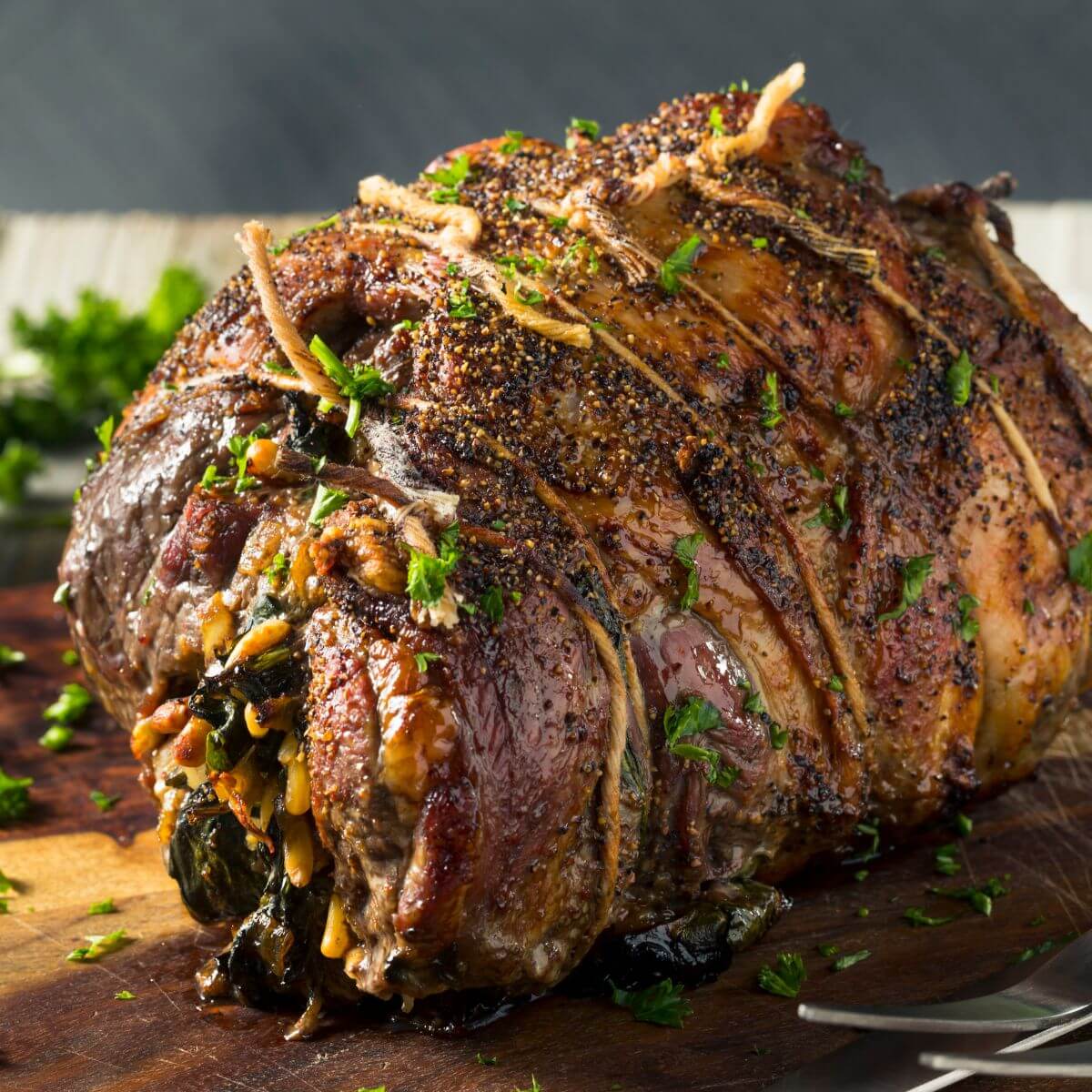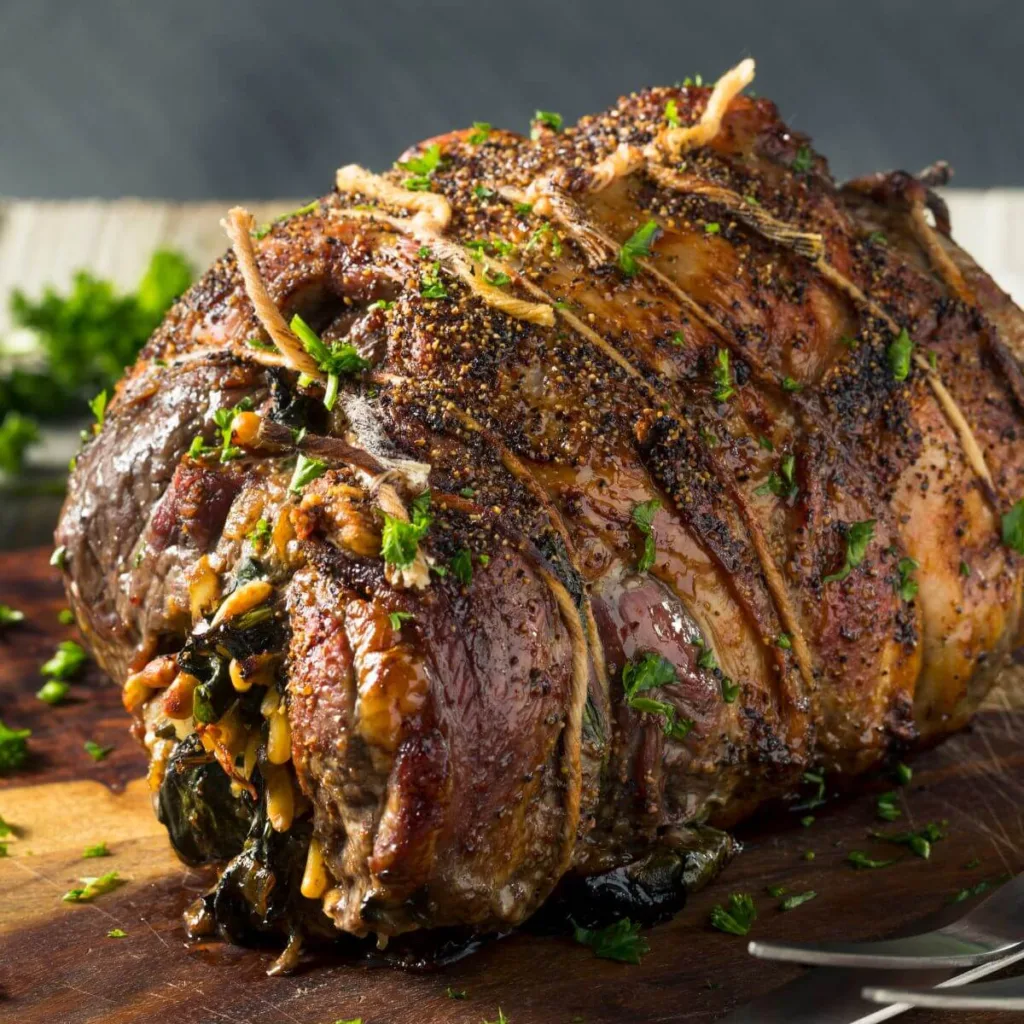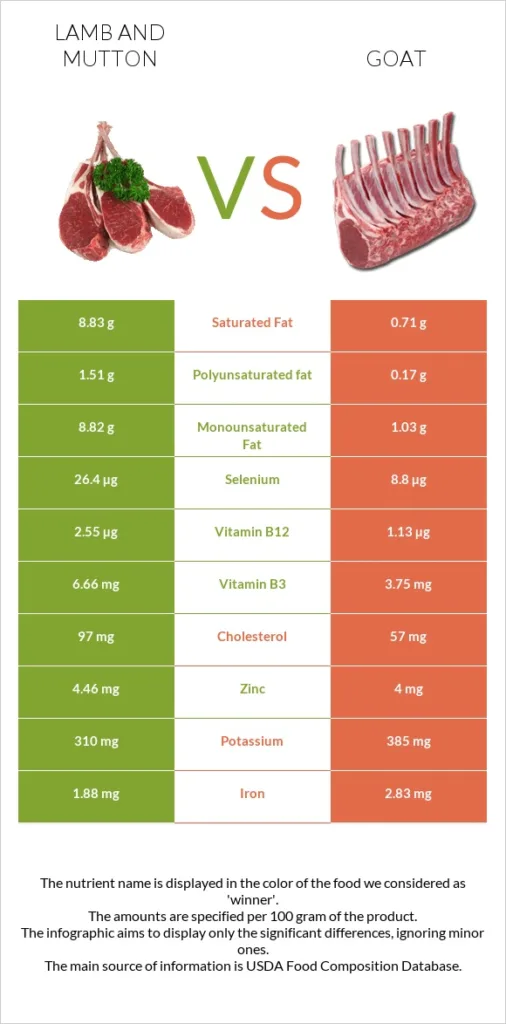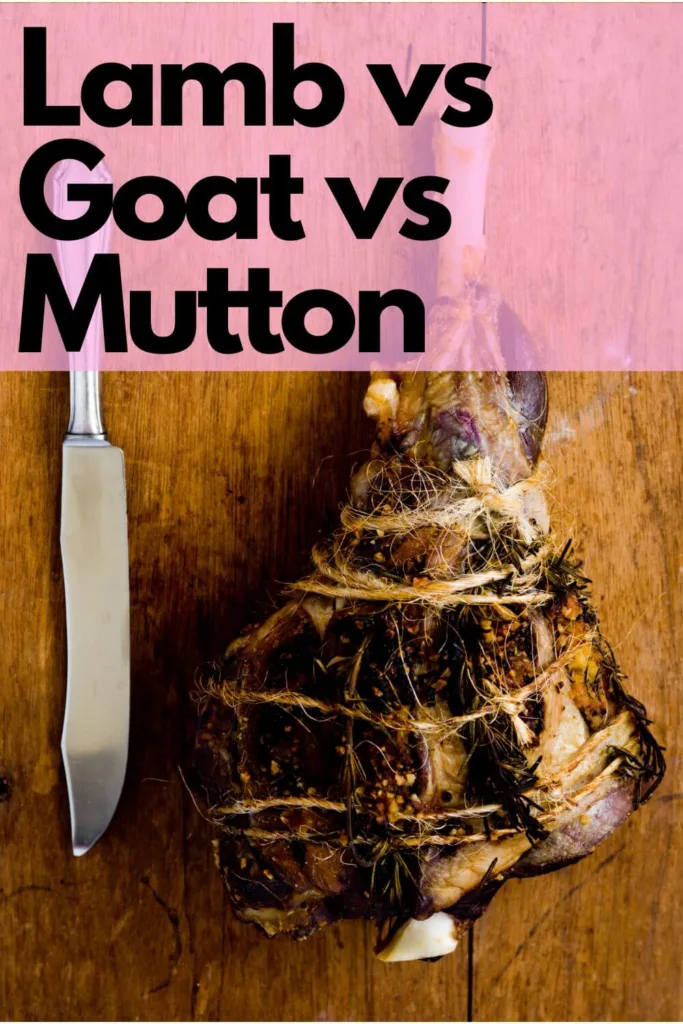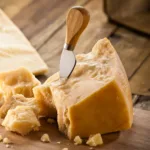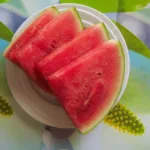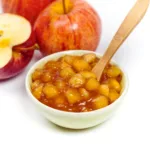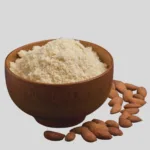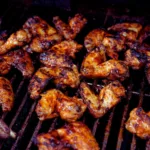Ever wonder about the difference between lamb vs goat? What about mutton? We’ve got answers to all your lamb, goat, and mutton questions. Strap in, and let’s get cookin’!
The world of red meats extends beyond the standard beef, pork, and chicken commonly seen on dinner plates across North America. Delve a bit deeper, and you’ll discover the rich world of lamb and goat meat, each with its unique set of textures, tastes, and culinary traditions. And, while we’re on the topic, what exactly is mutton? Let’s embark on a flavorful journey and discover the key differences between these meats.
Lamb vs Goat vs Mutton
Lamb
Lamb hails from young sheep, typically less than a year old. When you think of lamb, dishes like lamb chops and lamb ribs might spring to mind. This tender meat often sports a light pink hue, making it a visual treat. Lamb, especially spring lamb, has a higher fat content with noticeable marbling, which is partly why it’s so tender and moist. Originating from places like Australia, lamb dishes are popular during occasions like Easter.
Goat
Across the globe, especially in countries like India, goat meat reigns supreme. Known in culinary terms as chevon or, in specific contexts, cabrito or capretto, goat meat derives from goats (obviously!). Goats are categorized further: kids refer to younger goats while terms like buckling, doe, and wether denote gender and whether or not the goat is castrated. Goats are often recognized by their distinct goat horns.
Goat meat generally has a lower fat content compared to lamb, which might explain its leaner texture. Still, many savor it for its mild flavor, devoid of the overt gamey flavor sometimes found in older lamb or mutton.
Mutton
Mutton is the meat of older sheep, making it distinct from lamb. In certain areas, particularly India, mutton can also refer to older goat meat. This type of meat tends to be tougher, demanding slow-cooking methods to reach its full potential.
Lamb, Goat and Mutton Taste
Lamb
Lamb meat, with its tender nature, often has a richer taste compared to goat. The gamey flavor in lamb, particularly in cuts like lamb ribs or older lamb, can be stronger than in goat. However, this varies based on factors like the lamb’s age, diet, and gender. For instance, a male lamb or ram lamb might have a stronger taste than a milk lamb or baby lamb.
Goat
Goat, on the other hand, boasts a milder flavor, making it versatile in a plethora of dishes ranging from stews to curries. Its texture is leaner than lamb, thanks to its lower fat content.
Mutton
Mutton is a league of its own. With a robust gamey flavor, it’s often reserved for slow-cooked dishes, where its strong taste can meld with other ingredients, creating culinary masterpieces.
Nutritional Comparison
Red meats like lamb, goat, and mutton are nutrient-dense, packed with protein, vitamins, and minerals. When comparing cholesterol, lamb and mutton generally have more cholesterol per serving than goat meat.
A closer look:
- Protein: All three meats are excellent protein sources, essential for muscle growth and repair.
- Calories: Goat meat often has fewer calories due to its lower fat content.
- Vitamins and Minerals: These meats are rich in vital nutrients such as zinc, magnesium, potassium, and copper. They also boast B vitamins.
Buying Lamb, Goat, and Mutton
Purchasing Lamb
Selecting the perfect cut of lamb is both an art and a science, a combination of trusting one’s instincts and knowing the key indicators of quality. When embarking on a culinary journey with lamb as the centerpiece, you’ll want to ensure you’re starting with the best possible raw ingredients. Here’s a guide to help you make an informed choice when buying lamb:
Freshness: Like all meats, freshness is paramount. Lamb should have a pleasant and slightly sweet aroma. Any strong or sour smell is an indication that the lamb might not be fresh.
Color: The meat should be a soft pink to reddish-pink color. Pale or overly dark meat might not be as fresh or may come from an older sheep.
Marbling: Look for lamb with good marbling – that’s the tiny specks of fat within the meat. These fat specks ensure the meat remains juicy during cooking. Too much fat might render a greasier dish, while too little can result in drier meat.
Fat Cap: Lamb often comes with a cap of fat. This should be firm, white, and not too thick. A creamy or yellowish fat can indicate an older animal.
Bone Condition: If you’re buying cuts with bones, the bones should be moist and red. Dry or brown bones suggest the lamb has been frozen or is older.
Cut Specifics:
- Shoulder: Best for slow cooking, stewing, or braising.
- Rack of Lamb: Perfect for roasting or grilling. Look for even-sized bones for an impressive presentation.
- Loin or Lamb Chops: These are versatile cuts suitable for grilling, frying, or roasting.
- Leg of Lamb: Ideal for roasting. You can buy it bone-in for flavor or boneless for easier carving.
- Shank: Perfect for slow-cooking methods due to its tougher nature, resulting in tender, fall-off-the-bone meat after hours of cooking.
Lamb Age: As discussed in previous sections, the age of the lamb influences the flavor and tenderness. Milk lamb or spring lamb will offer a milder flavor, while hogget or mutton brings a deeper, gamey taste.
Source & Origin: If possible, inquire about the source of the lamb. Grass-fed lamb from places like Australia or New Zealand is often known for its superior quality and taste. Similarly, local, pasture-raised lamb can also offer rich flavors and support local farmers.
Certifications: Depending on your preferences, you might want to look for certifications like organic, grass-fed, or antibiotic-free. These labels give insight into the lamb’s upbringing and the practices of the farm where it was raised.
Purchasing Goat
Goat meat, often referred to as chevon or cabrito, is a delicacy in many cultures around the world. It’s known for its lean profile and rich, distinct flavor. If you’re considering cooking with goat meat, ensuring that you select a prime cut is pivotal. Here’s your guide to choosing the best quality goat:Freshness: First and foremost, the meat should smell fresh. Any off or rancid odors indicate that the goat meat isn’t fresh and should be avoided.
Color: Fresh goat meat has a bright red or purplish-red hue. Over time, as it oxidizes, the meat will turn a brownish-red – this isn’t necessarily a sign of bad meat, but fresher is typically better.
Fat Quality: Goat is naturally leaner than many other meats, but it should still have some white, even marbling. This fat will render during cooking, imparting flavor and tenderness. A goat with excessive fat, however, might indicate a grain-fed diet or less active lifestyle, which can impact the meat’s flavor and texture.
Age Matters: Younger goats, often termed ‘kids’, offer tender meat suitable for grilling or quick cooking. Older goats are more suited for slow-cooked dishes, like stews or curries, as their meat is tougher but offers a richer flavor.
Cut Preferences:
- Shoulder: Great for roasting or slow-cooking. It’s relatively lean but becomes tender and flavorful with longer cooking times.
- Leg: This cut is versatile and can be roasted, grilled, or stewed.
- Ribs: Suitable for grilling or roasting, ribs offer a flavorful and juicy experience.
- Loin: A premium cut that’s best grilled or pan-seared to retain its tenderness.
Bone Check: If you’re buying bone-in cuts, ensure the bones are moist and reddish. Older or previously frozen meat might have drier, whiter bones.
Origin and Provenance: It’s always beneficial to know the source of your meat. Inquire about the goat’s upbringing – whether it was pasture-raised, grain-fed, or a combination. Some regions are famed for their goat meat due to the local diet and rearing practices, so this can also be a factor in your decision.
Certifications: Depending on your personal preferences, you might seek out goat meat with certain certifications, such as organic, free-range, or antibiotic-free. These certifications can provide added assurance about the quality and ethical standards of the meat.
Ask the Butcher: Don’t be shy! Your butcher can be a wealth of knowledge. They might provide insights into the freshness of the cuts available, suggest cooking methods, or even share recipes.
Purchasing Mutton
Mutton, the meat of a mature sheep, is celebrated for its intense flavor and rich profile. It’s a staple in various cuisines, from Indian and Middle Eastern to British. Here’s a comprehensive guide on selecting the best mutton for your dish:
Freshness: The aroma is always a telling sign. Fresh mutton will have a distinct but not overpowering smell. Any strong, sour, or off-putting odors are warning flags.
Color: Look for meat that’s a deep red or purplish hue. Unlike lamb, mutton has a richer color due to its age. Pale or brownish-red tones may indicate lesser freshness.
Marbling: Good-quality mutton should have visible, but not excessive, marbling — those white streaks of fat within the meat. This ensures the meat will be juicy and flavorful once cooked.
Fat Content: Mutton, being from older sheep, tends to have a higher fat content. The fat should be firm and white. Yellowish fat is a sign of much older sheep and might impart a stronger, possibly undesirable flavor.
Cut Preferences:
- Shoulder: Known for its richness, it’s perfect for slow-cooked dishes.
- Leg: A meatier cut suitable for roasting or slow-cooking.
- Ribs: Best for long, slow cooking methods, ensuring tender meat as an outcome.
- Loin: This premium cut is ideal for grilling or quick cooking, but remember, mutton does have a stronger flavor than lamb.
Bone Condition: Bones in mutton cuts should be larger and darker than lamb due to the age of the animal. However, they shouldn’t appear dry or overly white.
Age Indicator: Mutton comes from sheep that are over two years old. It’s essential to ensure you’re actually getting mutton and not older lamb for the authenticity of flavor and texture.
Provenance: As with all meats, understanding the origin can be insightful. Pasture-raised mutton, especially those reared in terrains with herbs, can have a distinct taste profile. Grass-fed mutton is often leaner and can be more flavorful.
Certifications: If ethically sourced and organic meat is important to you, look out for relevant certifications. These can assure you about the animal’s upbringing and the farming practices employed.
Engage the Butcher: Always a good practice when buying any meat. The butcher can provide insights about the age of the mutton, suggest specific cuts for your intended dish, or offer preparation and cooking tips.
Ways to Cook Lamb vs Goat vs Mutton
The art of cooking is as much about the technique as it is about the ingredients. Especially when it comes to meats like lamb, goat, and mutton, where the method can be the difference between a dry, tough meal and a juicy, flavorful delight. Let’s delve a bit deeper into the best practices for each.
Cooking Lamb
Renowned for its tenderness, lamb offers a versatile playground for chefs and home cooks alike. Beyond the common practices of grilling, roasting, and smoking, braising lamb can yield fantastic results. Dishes such as lamb shanks, when braised, transform into a melt-in-the-mouth experience. Marinating lamb, especially cuts like lamb chops, in herbs and spices enhances its natural flavors. It’s also pivotal to use a meat thermometer to ensure safety. Aim for a minimum internal temperature of around 145°F (63°C) for medium-rare.
Cooking Goat
The lean profile of goat meat demands careful cooking. While stews and curries are staples, consider marinating goat meat overnight to tenderize and infuse flavors. For those adventurous in the kitchen, “cabrito” or young goat is a delicacy in many cultures and is traditionally spit-roasted, resulting in a crispy exterior and juicy interior.
Cooking Mutton
he robust nature of mutton needs patience. Slow-cooked mutton dishes, like rogan josh or mutton curry, showcase how time can unlock its profound depths of flavor. A pro-tip for mutton is to sear it first. This locks in the juices and gives a rich brown crust, after which it can be transferred to a pot for slow cooking. Combining it with aromatic herbs and spices can mask its strong gamey flavor, making it palatable even for those new to mutton.
In the end, whether it’s the succulent lamb chops from Australia or the spicy goat curries of India, mastering the method will ensure your meat dishes are always a hit.
Lamb vs Goat vs Mutton: Know Your Terminology
Understanding the world of lamb, goat, and mutton can be a rewarding culinary journey, made even richer when you’re armed with the right terminology. Here’s a vocabulary breakdown to help navigate your way through this intriguing trio:
Lamb Terminology to Know
- Lamb – This refers to a sheep under one year of age. Known for its tender meat, it has less fat compared to older sheep, making it a prime choice for many dishes.
- Milk Lamb – This term denotes a very young lamb, typically between 4 to 6 weeks of age. They are exclusively milk-fed, resulting in exceptionally tender meat and a mild flavor.
- Spring Lamb – A slightly older lamb, usually under 3 to 5 months of age. The meat from these lambs is light in color and very tender due to their primary diet of milk and grain.
- Ram Lamb – This is a male lamb under the age of one. As with most young meats, the flavor is milder and the meat more tender.
- Ewe Lamb – This refers to a female lamb under one year. Its meat is as tender as that of its male counterpart.
- Hogget – A term used for male or female sheep between 1 and 2 years of age. Its meat bridges the gap between tender lamb and the gamey taste of mature mutton.
- Ram (or Tup) – A mature male sheep that can reproduce. The meat from a ram is often richer and more flavorful.
- Ewe – This is a mature female sheep. Its meat can be used in mutton dishes, though it’s less common than meat from wethers or rams.
- Wether – Refers to a castrated male sheep. The meat from a wether is often preferred for mutton dishes due to its combination of flavor and tenderness.
Goat Terminology to Know
- Kid – A young goat. Much like lamb, the meat from kids is tender and boasts a milder flavor.
- Chevon – The meat from goats that are older than kids but younger than a year. It’s slightly tougher than kid meat but still holds a relatively mild flavor.
- Buckling – A young male goat.
- Doe – A female goat.
- Buck – A mature male goat. Just as with rams in the sheep world, the meat from bucks has a distinct and robust flavor.
- Cabrito or Capretto – Typically denotes the meat from very young goats, similar to milk lambs in sheep terminology.
- Mutton (in goat context) – In some cultures, mutton can also refer to the meat from an older goat, providing a more robust flavor and tougher texture compared to kid or chevon.
Equipped with this vocabulary, you’ll not only navigate menus and recipes with ease but also engage in enriching conversations with farmers, butchers, and fellow food enthusiasts. Happy cooking!
Dishes to Serve with Lamb, Goat or Mutton
Whether you’re making a roast leg of lamb or adding mutton to Mulligan stew, here are a few recipes that go perfectly with these beloved savory red meats.
23+ Irish Side Dishes
Red Lobster Stuffed Mushrooms
22 Russet Potato Recipes
Crispy Tobacco Onions
Lamb, Goat, and Mutton FAQs
Is a lamb and goat the same thing?
No, a lamb and a goat are not the same thing. A lamb is a young sheep, while a goat is an entirely different species.
Is lamb a sheep or goat?
Lamb is a young sheep. It refers to the meat of a sheep that is typically less than one year old.
Are lambs and goats related?
Yes, both lambs (sheep) and goats belong to the same family, Bovidae, but they are different species. While they share certain similarities and can even interbreed in rare instances, they have distinct differences in appearance, behavior, and habitat.
What is goat meat called in USA?
In the USA, goat meat is often referred to as “goat” or “chevon.” In some cultural contexts within the USA, it might also be called “mutton,” though in many parts of the world, “mutton” refers to the meat of an older sheep.
Whether you’re sampling a tender piece of grilled lamb in Australia, savoring a goat curry in India, or enjoying a slow-cooked mutton stew, each of these meats offers a unique taste experience. And while they might be different in many ways, from their textures to nutritional content, one thing’s for sure: they’re a testament to the rich tapestry of global culinary traditions. Next time you’re thinking beyond beef, pork, or chicken, give these a try!
Have questions or suggestions about lamb vs goat or mutton? Leave them in the comments below.

